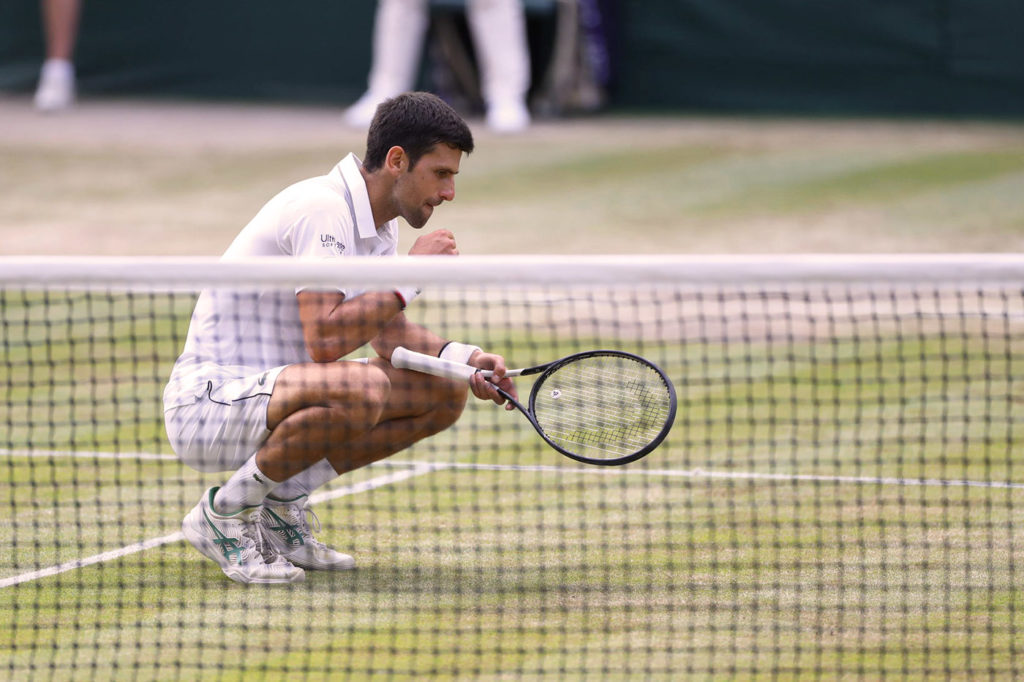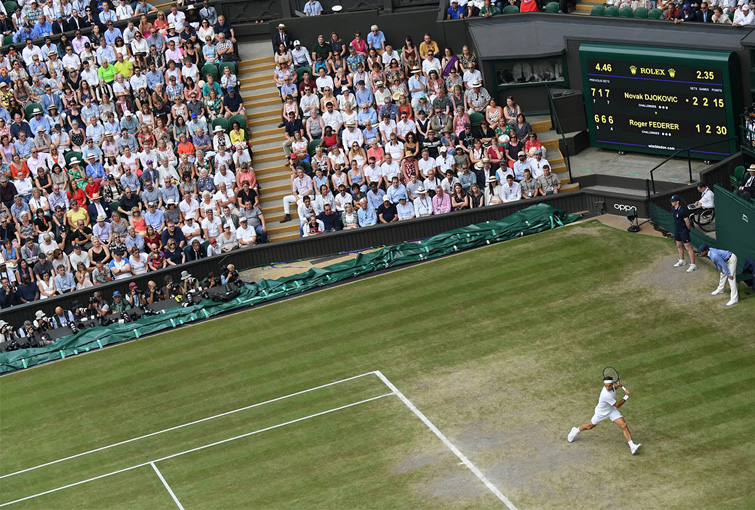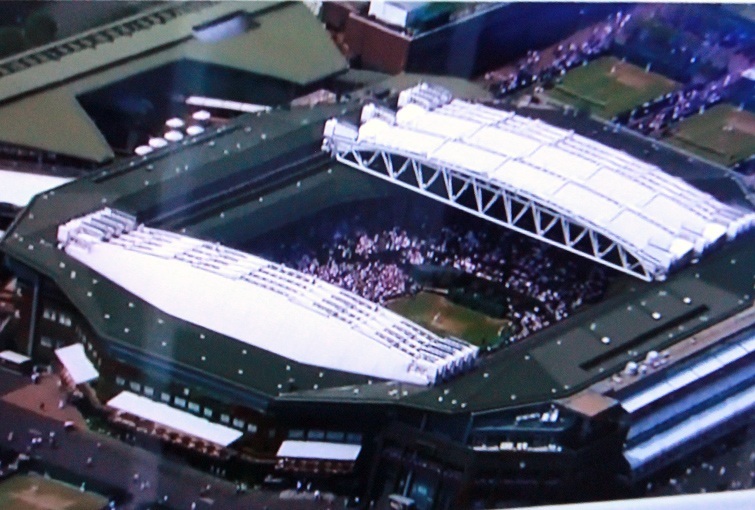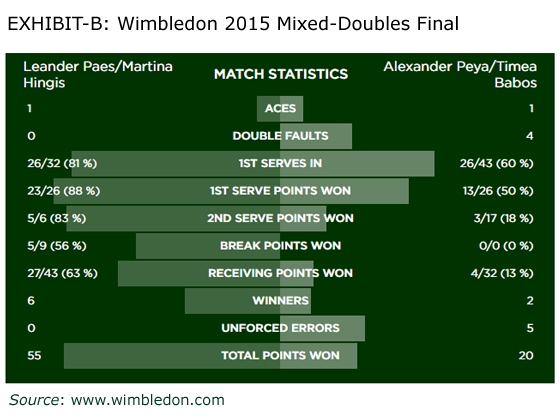“Fed-ex is doing great; is gonna win the finals this time [sic],” said M.
“If the match goes beyond 4 sets, then Djoko will surely lift the Wimbledon trophy,” bet I.
M, a die-hard Federer fan with whom I am having almost fortnightly consulting sessions these days, and I were discussing about the possible Wimbledon-2019 winner. We had an unusual start of the day this week, playing the ‘let’s predict the Federer-Djokovic finals winner’ game, after India crashed out of CWC-19.
Suddenly, the Federer-Djokovic finals seemed more entertaining to watch.
In the end, both of us were right.
Fed-ex indeed did do great coming close to winning the title on two occasions. Djoko indeed lifted the trophy with Federer’s massive mis-hit in the end.
There he squats down to follow his winner’s routine of nibbling on a few blades of Wimbledon grass – the sweet taste of success!

No, I do not intend to write this post telling how predictive analytics has helped predict Djoko to be the winner against Federer in today’s match.
Except, that is what this might turn out to be!
For the starters, a Federer-Djokovic match has gone beyond the realm of simple analytics.
Why?
Till date, Federer is the only gentleman (ahem… Wimbledon effect, you see!) to have beaten Djokovic in all four Grand Slam tournaments.
Similarly, Djokovic is the only man to have beaten Federer in all the four majors.
Federer has an all-time high number of 20 Grand Slam titles under his belt, while Djokovic, with today’s win, is not too far behind with 16.
Federer has held the world No. 1 spot in the ATP rankings for a record total of 310 weeks, while Djokovic continues to do so for over 250 weeks now.
The playing surface hasn’t been a decider either; both of them have beaten each-other on all surfaces.
Federer is marginally better on 1st serve win % (which is usually > 70%), while Djokovic only slightly trumps on 2nd serve win % (hovering around 60%).
And both gentlemen have achieved a career Grand Slam, two of only eight people to have done so, ever.
With such complex statistics behind the two greats, how do we conclusively analyse, and say that Djoko has a better chance at winning 2019?
Let’s consider these facts:
Federer and Djokovic have faced head-to-head 48 times, with Djoko winning 54% of the times (or 26 games) overall.
Federer dominated Djoko in 13 matches out of 19 (with a win % of 68.5) until 2010.
Since 2011, Djoko has beaten Federer 20 out of 29 times (with a win % of 68.9).
Isn’t this amazing?
Roger ruled the Wimbledon centre court until 2010, winning it 6 times.
Djokovic dominated (well, almost) the Wimbledon since 2011, winning it 5 times.
What comes next is even more amusing.
I had written in this 2015 Veracle on Lessons from Wimbledon Centre Court, how Federer’s winning points came off 5 rallies or less. And the more rallies he played (against Djokovic), the more likely he stood to lose.
Switch to 2019, Djokovic’s winning points came from 8 rallies or more; the more rallies he forced on Federer, the more unforced errors Federer rallied.
In 2015, Federer had 35 unforced errors against Djokovic’s 16.
Also, in 2015, Federer ran 5 meters more than Djokovic, for every point scored.
Later in 2019, Federer rallied 62 unforced errors, 10 more than Djoko.
In 2019, Federer covered 7 meters more distance than Djokovic, for every point scored.
The Two Finals
Then, there is an uncanny resemblance in the match stats between 2015-final and 2019-final.
And I found it fascinating to compare the score-lines from the Wimbledon finals of 2009 and 2019.
2009 Wimbledon gentlemen’s final score-line:
Federer d. Roddick 5–7, 7–6(8–6), 7–6(7–5), 3–6, 16–14
2019 Wimbledon gentlemen’s final score-line:
Djokovic d. Federer 7–6(7–5), 1–6, 7–6(7–4), 4–6, 13–12(7–3)
See the only slight twist in the two score-lines? Just flip the scores of first two sets.
So much for the analytics…
Having said that, what a final it was! The longest one in Wimbledon history – and probably one of the most entertaining ones too?!
In the other tie, England defeated New Zealand with a margin as wide as a thin blade of grass.
In sum, when it comes to such close calls, nerves win. And DATA!
Just saying…
Related Posts:
- 3 Lessons Every Executive must Learn from Wimbledon Centre Court
- What does Digital Maturity really mean
- Product Differentiation: Why it isn’t enough anymore
<– How Deliberate Strategy Can Be the Working Strategy!
How will you measure your business, and life –>
You can also subscribe to our blog – Veracles – to receive interesting articles and insights in email. We would love to read your perspectives and comments on that.
Do follow Veravizion on LinkedIn, Twitter or Facebook to receive easy updates.
Cover photo credit: Wimbledon.com



